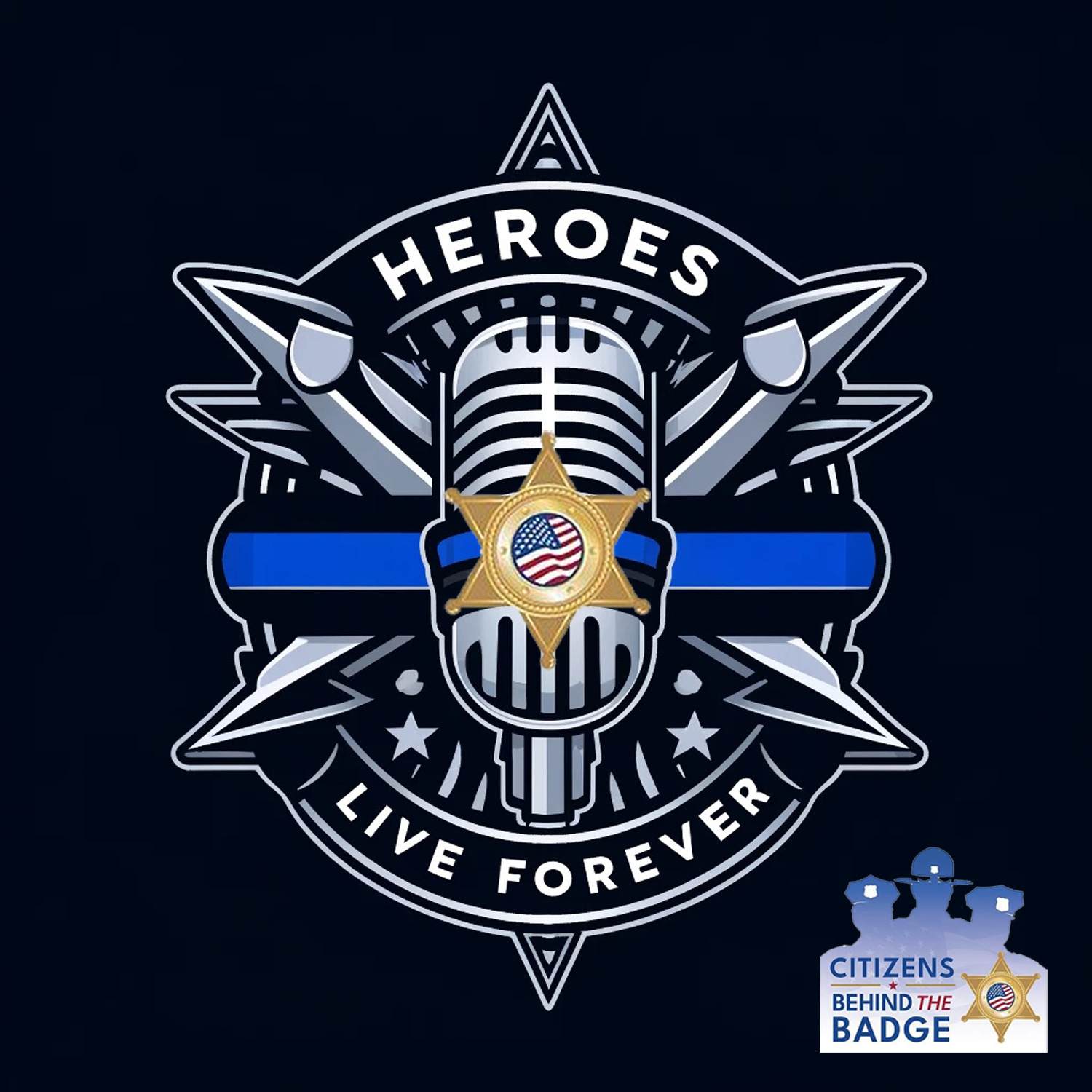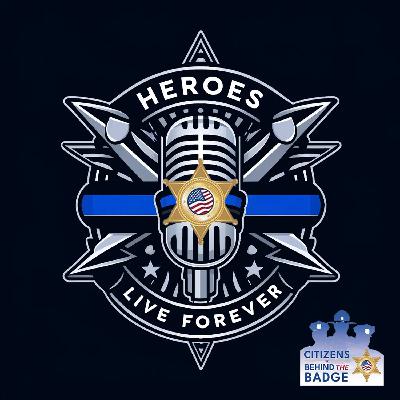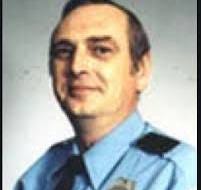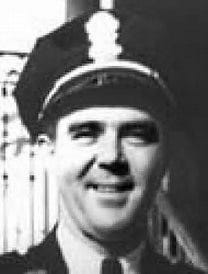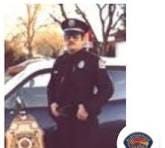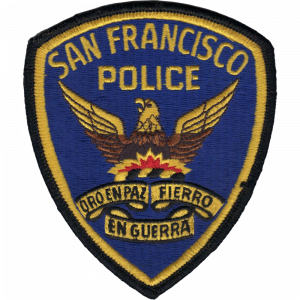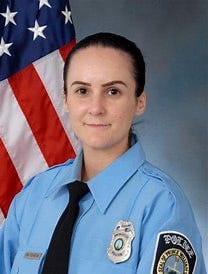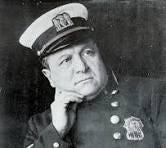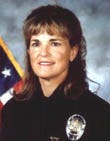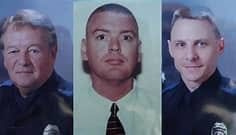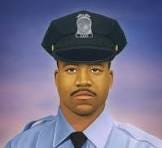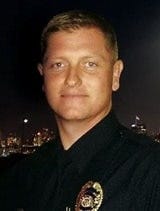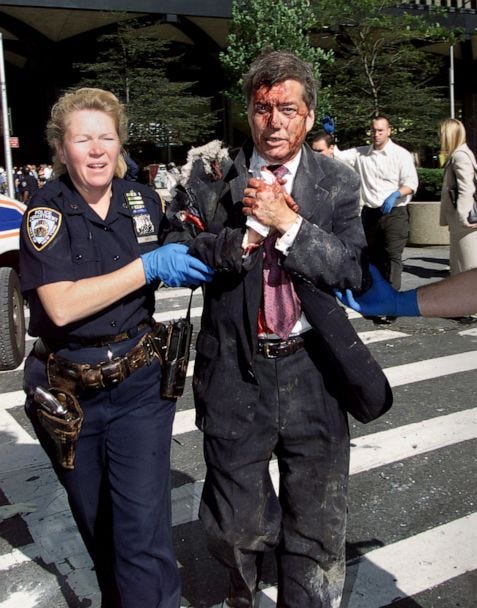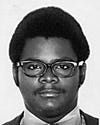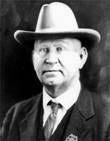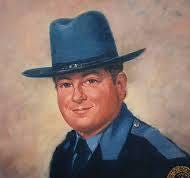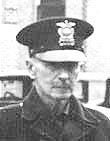Discover Heroes Live Forever Podcast
Heroes Live Forever Podcast

Heroes Live Forever Podcast
Author: Craig W. Floyd
Subscribed: 1Played: 13Subscribe
Share
© Craig W. Floyd
Description
Each podcast pays tribute to law enforcement officers who have made the ultimate sacrifice in the line of duty.
behindbadge.substack.com
behindbadge.substack.com
82 Episodes
Reverse
McLean, VA (December 23, 2025) - On February 25, 1987, while guarding a prisoner at a hospital, Miami County (OH) Sgt. Robert L. “Bobby” Elliott was shot and killed. The prisoner escaped but was soon tracked down and died by suicide during a shootout with police. Everyone who worked with Bobby remembers the same thing—his “heart of gold,” as one colleague said. A nurse remembers the night before he was killed and how he spoke gently to the prisoner who would soon murder him—explaining that he was still loved by God and redemption was possible. And his beloved wife, Tammie, shared memories of their last time together—their son, Nate convincing him to run the lights and siren and daughter, Rhea, wrapping him around her finger with one look. Memorials have been built in his honor, but his greatest tribute comes from his son, Nate, who is now a captain with the Fostoria (OH) Police Department—following in his father’s footsteps and carrying on his legacy of service to others. Listen to the podcast to learn more.Citizens Behind the Badge communicates through Substack! Please share this post and encourage others to subscribe for free to hear this podcast and get other news and updates. This is a public episode. If you would like to discuss this with other subscribers or get access to bonus episodes, visit behindbadge.substack.com
McLean, VA (December 16, 2025) - Around 4 a.m. on December 14, 1951, Detroit Police Officer Stanley J. Jerlecki and his partner responded to a burglary at a jewelry store. As he pursued one of the suspects, gunfire erupted. Officer Jerlecki was struck, but in his final moments he returned fire, fatally wounding the adult suspect. The second suspect — a juvenile — was captured and later convicted of burglary. The adult gunman should have been in jail at the time of the murder. Just a couple of weeks earlier, he had robbed a liquor store at gunpoint, but a judge let him out on bail. He left behind his wife, Mary Jane, a four-year-old son, Stan, and a three-year-old daughter, Dolly. His death inspired the start of the first 100 Club in the U.S.—dedicated to providing financial and other assistance to survivors of the fallen. His death also reminds us of how far we’ve come over the years in honoring officers who die in the line of duty and taking care of their families. We now have National Police Week, Peace Officers Memorial Day, the National Law Enforcement Officers Memorial, and the National Law Enforcement Museum. We have Concerns of Police Survivors (C.O.P.S.), the Public Safety Officers’ Benefits Program (PSOB), and 100 Clubs across the country. Listen to the podcast to learn more.Citizens Behind the Badge communicates through Substack! Please share this post and encourage others to subscribe for free to hear this podcast and get other news and updates. This is a public episode. If you would like to discuss this with other subscribers or get access to bonus episodes, visit behindbadge.substack.com
McLean, VA (December 9, 2025) - On January 8, 2002, a woman called the Beaufort County, South Carolina, Sheriff’s Office to say that her friend was being held by a man against her will and “needed help.” Lance Corporal Dana L. Tate Sr. and Corporal Dyke “A.J.” Coursen raced to the scene. When Deputies Tate and Coursen arrived, the man hid in a bedroom closet with a high-powered SKS assault rifle. As they searched the bedroom, the two deputies were shot multiple times. Both died at the scene. Corporal Tate managed to wound the gunman before succumbing to his injuries. The cop killer, a convicted felon out on parole, briefly escaped, but was soon found and ultimately sentenced to death for the two murders. He remains on death row. The Beaufort County Sheriff’s Office has said their deaths remain “a vivid reminder of the dangers of our profession. We will always remember and be inspired by the example they have given us. Their spirit remains, like a handprint on our hearts.” Listen to the podcast to learn more.Citizens Behind the Badge communicates through Substack! Please share this post and encourage others to subscribe for free and hear about other law enforcement heroes. This is a public episode. If you would like to discuss this with other subscribers or get access to bonus episodes, visit behindbadge.substack.com
McLean, VA (December 2, 2025) - On September 25, 1992, Minneapolis Police Officer Jerome “Jerry” Haaf Sr., 53, was near the end of his shift when he stopped by a favorite cop hangout to have a cup of coffee and finish some paperwork. As he sat at the table, two gang members entered from behind. They were members of the Vice Lords street gang. Without warning, they opened fire, shooting Jerry twice in the back. Jerry was rushed to the hospital, but his wounds were too severe and he died. Four men were convicted for their roles in the murder. The shooter was sentenced to life in prison; three of his accomplices received 30-year sentences. It turned out that the assassins didn’t even know Officer Haaf. The motive was chillingly simple: Jerry was killed because of the uniform he wore. The Vice Lords wanted to send a message of hate to law enforcement. Officer Haaf, who had served the city of Minneapolis for 30 years, was just months away from retirement. He was survived by his wife, Marilyn, a daughter and two sons. Listen to the podcast to learn more.Citizens Behind the Badge communicates through Substack! Please share this post and encourage others to subscribe for free and hear about other law enforcement heroes. This is a public episode. If you would like to discuss this with other subscribers or get access to bonus episodes, visit behindbadge.substack.com
McLean, VA (November 25, 2025) - On the afternoon of November 1, 1950, two Puerto Rican nationalists seeking independence for their island from U.S. control, launched an attack on Blair House where President Truman was living while the White House was under renovation. Their goal was to either kidnap or assassinate the President to draw international attention to their cause. Standing guard was Private Leslie Coffelt, a 40-year-old officer of the White House Police (later renamed the Uniformed Division of the U.S. Secret Service). As the attackers opened fire, Private Coffelt was struck three times and mortally wounded. Yet in those final moments, he summoned the strength to return fire. With a single, precise shot to the head from 31 feet away, he killed one of the assailants, ending the assault and protecting the President. Two other members of the White House Police, Donald Birdzell and Joseph Downs, were also wounded in the incident, but both survived. Later, when honoring Private Coffelt with a plaque at Blair House, President Truman called him “one of the most pleasant officers on the force—and one of the ablest.” Listen to the podcast to learn more.Citizens Behind the Badge communicates through Substack! Please share this post and encourage others to subscribe for free and hear about other law enforcement heroes. This is a public episode. If you would like to discuss this with other subscribers or get access to bonus episodes, visit behindbadge.substack.com
McLean, VA (November 18, 2025) - On July 24, 1998, a mentally deranged man drove from Montana to Washington, D.C. with death and destruction on his mind. He was carrying a .38 caliber revolver and thoughts clouded by delusion. At 3:40 p.m., he set off the metal detector at the Document Door on the East Front of the U.S. Capitol. When Capitol Police Officer Jacob “J.J.” Chestnut asked him to step back through, the crazed killer pulled his gun and shot the 58-year-old officer point-blank in the back of the head. The man then ran deeper into the Capitol. Det. John Gibson heard the gunfire. He was protecting the office of then-House Majority Whip Tom DeLay. He told staffers to hide under their desks. When the man burst through the office door, Det. Gibson confronted him. He was shot in the chest and mortally wounded, but he was able to return fire, striking the man multiple times and stopping the attack. A nation mourned for their heroic sacrifice, and Officer Chestnut and Det. Gibson became the first police officers to lie in honor in the U.S. Capitol rotunda. Listen to the podcast to learn more.Citizens Behind the Badge communicates through Substack! Please share this post and encourage others to subscribe for free and hear about other law enforcement heroes. This is a public episode. If you would like to discuss this with other subscribers or get access to bonus episodes, visit behindbadge.substack.com
McLean, VA (November 11, 2025) - On July 17, 1975, two Florham Park, New Jersey, police officers—Patrolman Robert Hauptman and Det. Francis “Frank” Dailey Jr.—were killed in an airplane crash while returning from a reconnaissance flight searching for a marijuana crop. They were close to landing when their airplane stalled and then clipped a tree. They crashed to the ground and both officers were killed—50 years ago. In 1997, more than two decades later, a young Florham Park police sergeant named Patrick Montuore was concerned that too many people had forgotten about these two fallen heroes. Pat was determined to revive their memories, along with the memories of thousands of other officers who had died in the line of duty. He envisioned a powerful tribute: a 300-mile bicycle ride from Florham Park to the National Law Enforcement Officers Memorial in Washington, D.C. He called it the Police Unity Tour. On that first ride in 1997, only 18 riders participated and they raised $18,000. The ride has grown every year since. This year, nearly 2,500 members participated and they donated $2.2 million to the National Law Enforcement Officers Memorial Fund. Their total donations since 1997 have now surpassed more than $40 million. Listen to the podcast to learn more.Citizens Behind the Badge communicates through Substack! Please share this post and encourage others to subscribe for free and hear about other law enforcement heroes. This is a public episode. If you would like to discuss this with other subscribers or get access to bonus episodes, visit behindbadge.substack.com
McLean, VA (November 4, 2025) - On February 24, 1983, Albuquerque Police Officer Gerald “Jerry” Cline responded to a call at a low-rent motel. A man was threatening others with a rifle. Soon after he arrived on the scene, Officer Cline was ambushed and killed by a single rifle shot fired at point-blank range. His killer was soon arrested and sentenced to death—a sentence that was commuted to life imprisonment by an out-going governor. Jerry was a husband and father of three children. Jerry’s wife, Yolanda, transformed her grief into a force for healing. She became the national president of C.O.P.S. (the Concerns of Police Survivors) and helped thousands of families navigate the pain of losing a loved one in the line of duty. Yolanda once told a story about Jerry. He’d been in an officer-involved shooting a decade before he was murdered. Jerry suffered post-traumatic stress. He called the hospital every day to check on the condition of the man he shot. The story exemplified how tough the job can be, but more importantly it showed just how much officers care—even for those who would do them harm. Listen to the podcast to learn more.Citizens Behind the Badge communicates through Substack! Please share this post and encourage others to subscribe for free and hear about other law enforcement heroes. This is a public episode. If you would like to discuss this with other subscribers or get access to bonus episodes, visit behindbadge.substack.com
McLean, VA (October 28, 2025) - On August 14, 1958, San Francisco lost one of its own. Police Officer Barry Ronald Rosekind, just 30 years old, was killed in the line of duty while pursuing a speeding vehicle on his police motorcycle. His watch ended, but his legacy had only begun. Barry left behind his wife, Marilyn, and two young sons, Mark and Gary. Marilyn was one of the founders and longtime president of the Bay Area Law Enforcement Assistance Fund (BALEAF), an organization dedicated to support the families of fallen officers. Mark was only 3 years old when his father died, but the loss he suffered would become his inspiration. Decades later, Mark rose to become the Administrator of NHTSA (the National Highway Traffic Safety Administration), our nation’s leader in promoting safety on our roadways. During his tenure, Mark made officer traffic safety a top priority. But his focus expanded much further, doing everything he could to make sure fewer families would endure the loss of a loved one on our nation’s roadways. His leadership was described as aggressive and unrelenting. And there was good reason. Every initiative, every regulation, every public statement carried the echo of his father’s sacrifice. Listen to the podcast to learn more.Citizens Behind the Badge communicates through Substack! Please share this post and encourage others to subscribe for free and hear about other law enforcement heroes. This is a public episode. If you would like to discuss this with other subscribers or get access to bonus episodes, visit behindbadge.substack.com
McLean, VA (October 21, 2025) - Ashley Guindon once wrote in her high school yearbook, “Live for something rather than die for nothing.” It summed up the way she chose to live her life—why she became a Marine Corps Reservist and a Prince William County (VA) police officer. Her decision to become a police officer was, in part, a tribute to her father. He had once dreamed of joining the force himself. But he was injured in an accident and couldn’t pursue the career of his dreams. Ashley fulfilled that dream for him. Ashley was 28 when she was sworn in as a police officer. The very next day, February 27, 2016—her first shift on patrol—she responded to a domestic disturbance call in Lake Ridge, Virginia. Before officers arrived, a 32-year-old active-duty soldier fatally shot his wife. When Ashley and two fellow officers responded to the call, the man opened fire with a rifle. Ashley was killed and the other two officers were seriously wounded but survived. The murderer was arrested on the scene and is serving seven consecutive life terms in prison. Ashley’s tour of duty had lasted just one day. But her death did not end her story. At her funeral, her police chief, Steve Hudson, said, “Ashley will never leave you. Her strength will inspire you. Her passion and drive will keep you moving day in and day out.” Listen to the podcast to learn more.Citizens Behind the Badge communicates through Substack! Please share this post and encourage others to subscribe for free and hear about other law enforcement heroes. This is a public episode. If you would like to discuss this with other subscribers or get access to bonus episodes, visit behindbadge.substack.com
McLean, VA (October 14, 2025) - Lt. Joseph Petrosino wasn’t just a New York City police officer—he was a trailblazer. Born in Italy, he immigrated to America as a child. He became the first Italian-speaking officer in the department’s history, and he quickly rose through the ranks. He founded the NYPD’s famed Italian Squad, a unit dedicated to investigating the Mano Nera, or Black Hand, a notorious extortion racket that operated primarily in Italian-American communities. Under his leadership, the squad cut Italian mafia crime by nearly 50 percent. On March 12, 1909, while on a secret mission in Palermo, Italy, he was assassinated by the criminals who feared him. His funeral in New York City drew more than 250,000 mourners. His methods—surveillance, undercover work, intelligence gathering—became the blueprint for modern policing. Joseph Petrosino is thought to be the first Italian-American police officer ever to die in the line of duty, and the only NYPD officer to be killed on foreign soil. Listen to the podcast to learn more.Citizens Behind the Badge communicates through Substack! Please share this post and encourage others to subscribe for free and hear about other law enforcement heroes. This is a public episode. If you would like to discuss this with other subscribers or get access to bonus episodes, visit behindbadge.substack.com
McLean, VA (October 7, 2025) - Christy Lynne Hamilton’s life-long dream was to follow in her father’s footsteps and become a Los Angeles police officer. But for many years that dream was put on hold while Christy raised her two children, Kelley and Steven. Finally, with her children grown, 45-year-old Christy Hamilton became a rookie police officer with the Los Angeles Police Department. But on February 22, 1994, just four days after her graduation ceremony from the Police Academy, she was shot and killed responding to a domestic disturbance call. It was a little after one in the morning when Christy and other officers arrived on the scene. Suddenly, a hail of gunfire was raining down on them. Officer Hamilton was hit and, an hour later, she died at a nearby hospital. Her assailant was a habitual drug user who had murdered his father and then waited to ambush the police he knew would arrive. He then died by suicide. Christy’s father, retired Los Angeles Det. Ken Brondell, said later, “She would have worn [her badge] without arrogance. She didn’t want a badge to have authority; she wanted to go out and help people. It’s just too bad it got cut short.” Listen to the podcast to learn more.Citizens Behind the Badge communicates through Substack! Please share this post and encourage others to subscribe for free and hear about other law enforcement heroes. This is a public episode. If you would like to discuss this with other subscribers or get access to bonus episodes, visit behindbadge.substack.com
McLean, VA (September 30, 2025) - On the afternoon of June 17, 2004, four Birmingham (AL) police officers went to arrest Nathaniel Woods on a misdemeanor domestic violence charge. After confronting Woods inside an apartment, a struggle ensued and Woods broke free. Another man inside the home opened fire with a SKS semi-automatic rifle. The gunfire was relentless and Officers Carlos Owen, Charles Robert Bennett and Harley Chisholm III were killed. The fourth officer, Michael Collins, was saved when one of the bullets aimed at him struck only his holster. Woods and his accomplice, Kerry Spencer, were soon captured and ultimately convicted of capital murder and sentenced to death. Woods was executed in 2020 and Spencer remains on death row. Harley Chisholm, 40, was a U.S. Marine Corps veteran and had served for six years with the department. Carlos Owen was a seasoned veteran with over 26 years on the force. And Charles Bennett had served for eight years. All were deeply respected by their peers and their community. Listen to the podcast to learn more.Citizens Behind the Badge communicates through Substack! Please share this post and encourage others to subscribe for free and hear about other law enforcement heroes. This is a public episode. If you would like to discuss this with other subscribers or get access to bonus episodes, visit behindbadge.substack.com
McLean, VA (September 23, 2025) - By all accounts, Brian T. Gibson, 28, was a top cop, one of the Washington, D.C. Metropolitan Police Department’s very finest. On a quiet winter night on February 5, 1997, this husband and father of two was sitting in his marked patrol car at a traffic light when a man walked up and fatally shot him four times at point-blank range. It was a senseless act of violence committed by a drunken man fueled with rage and out for revenge against police. Moments before the shooting, Brian’s killer had been ejected from a nearby nightclub by an off-duty D.C. police officer working security at the club. The man had been drinking heavily and became unruly in the club. After getting thrown out, the man became enraged and wanted to kill a cop—any cop. Officer Gibson was the first cop he saw and became his unsuspecting target. Within minutes, the assassin was arrested by police and he was ultimately convicted of first-degree murder and sentenced to life in prison without the possibility of parole. Brian was survived by his wife, Tracie and two young children. In addition, he left behind a sister, Terrica, and his parents, Shirley and Harrison Gibson. Shirley became a beloved and inspirational figure in the law enforcement community. She served as the national president of the Concerns of Police Survivors and was a pillar of hope and support to thousands of others who lost a loved one in law enforcement service. Listen to the podcast to learn more.Citizens Behind the Badge communicates through Substack! Please share this post and encourage others to subscribe for free and hear about other law enforcement heroes. This is a public episode. If you would like to discuss this with other subscribers or get access to bonus episodes, visit behindbadge.substack.com
McLean, VA (September 16, 2025) - Jeremy Henwood was a United States Marine combat veteran. He survived two tours of duty in Iraq and another in Afghanistan. And when he returned from Afghanistan as a Captain in the Marine Reserves, he resumed his duties as a San Diego police officer. Sadly, it was this other war—the war on crime and terror being waged on the streets of America—that would claim this Marine’s life. On August 6, 2011, as Jeremy sat in his marked cruiser at a traffic light, a felon who was fleeing police pulled up alongside of him. Before Jeremy even had a chance to look over, the career criminal fired a shotgun blast at his head. Jeremy died the following day. His killer was soon tracked down by police and was shot and killed while resisting arrest. Minutes before he was shot, Jeremy was at a McDonald’s when a 13-year-old boy asked him for a dime to help him buy three cookies. Instead, Jeremy treated the boy to lunch and offered a life lesson. He asked the boy what he wanted to do with his life. The boy said he wanted to be an NBA basketball star. Jeremy encouraged him to follow his dream, saying anything was possible—as long as you worked hard at it. This last act of kindness had summed up the way Jeremy lived his life. Listen to the podcast to learn more. Citizens Behind the Badge communicates through Substack! Please share this post and encourage other law enforcement officers and supporters to subscribe for free and receive news and updates. This is a public episode. If you would like to discuss this with other subscribers or get access to bonus episodes, visit behindbadge.substack.com
McLean, VA (September 9, 2025) - As we prepare to commemorate the 24th anniversary of 9/11, the deadliest day in law enforcement history, CBB founder and president shared some of his memories from that fateful day and the year that followed. He described a visit to “Ground Zero”—the site of the attacks in New York City—one week after 9/11. One of his most poignant moments came on the ride out of Ground Zero in a police cruiser. The crowd began applauding and cheering loudly. Some held signs saying, “We love our police and firefighters.” He recalled a ceremony at the National Law Enforcement Officers Memorial the following April where Port Authority Police Chief Joseph Morris stood and watched as his predecessor’s name, Fred Morrone, was engraved onto the Memorial, one of 37 Port Authority officers to die that day. And he remembered the Memorial Candlelight Vigil in May when the names of all 72 fallen heroes of 9/11 were read aloud. There were two special guests on the dais that night—Port Authority Police Officers John McLoughlin and Will Jimeno—who were the last survivors to be pulled from the rubble hours after the towers collapsed. Craig later wrote about their miraculous rescue, saying, “Their story is all about courage and a will to survive and recover from one of the greatest acts of evil and destruction our nation will ever know. That is the memory I have chosen to remember the most about 9/11.” Listen to the podcast to learn more.Citizens Behind the Badge communicates through Substack! Please share this post and encourage other law enforcement officers and supporters to subscribe for free and receive news and updates. This is a public episode. If you would like to discuss this with other subscribers or get access to bonus episodes, visit behindbadge.substack.com
McLean, Va (August 25, 2025) - Many have come to know it simply as the “Howard Johnson Tragedy.” Motivated by racial hatred and anti-police sentiment, a lone gunman by the name of Mark Essex, launched a violent rampage targeting law enforcement and civilians. When his week-long rampage was over, 10 people were dead, including five New Orleans police officers. Thirteen other first responders and civilians were wounded. It all started on New Year’s Eve 1972 when Essex shot and killed two New Orleans officers—Police Cadet Alfred Harrell and Sgt. Edwin Hosli Sr.—in separate incidents. A week later, the killer barricaded himself in the Howard Johnson Hotel in downtown New Orleans. During a 36-hour siege, he killed three more New Orleans officers: Patrolman Paul Persigo, Patrolman Philip Coleman Sr. and Deputy Superintendent Louis Sirgo. Cornered, with nowhere to escape, Essex made a futile run from his hiding place and was gunned down by the police sharpshooters who had surrounded the hotel. His body was riddled with some 200 bullet wounds. Listen to the podcast to learn more.Citizens Behind the Badge communicates through Substack! Please share this post and encourage other law enforcement officers and supporters to subscribe for free and receive news and updates. This is a public episode. If you would like to discuss this with other subscribers or get access to bonus episodes, visit behindbadge.substack.com
McLean, VA (August 19, 2025) - The history books have immortalized the event as the “Santa Claus Bank Robbery.” It occurred on December 23, 1927, in the central Texas town of Cisco. The robbery is one of the most infamous crimes in Texas history, having resulted in the largest manhunt ever seen in the state. After being freed from prison for an earlier bank robbery, Marshall Ratliff hatched a plan to rob his hometown bank in Cisco. He gathered a crew of other ex-cons to assist in the crime. Ratliff knew that he would be recognized by his hometown residents, so he planned the heist for late December so he could disguise himself with a Santa Claus costume and blend in with the holiday crowd. During the robbery, a woman in the bank managed to escape and tell the local police chief. Officers surrounded the bank and a 10-minute shootout took place. When it was over, Cisco Police Chief George “Bit” Bedford and Officer George Carmichael were mortally wounded. After an intense manhunt, one of the robbers was dead from his gunshot wounds and the three others were captured. Ratliff, the ringleader, was lynched by an angry mob nearly two years later after killing another lawman, Eastland County (TX) Deputy Thomas Jones, during an escape attempt. Listen to the podcast to learn more. Citizens Behind the Badge communicates through Substack! Please share this post and encourage other law enforcement officers and supporters to subscribe for free and receive news and updates. This is a public episode. If you would like to discuss this with other subscribers or get access to bonus episodes, visit behindbadge.substack.com
McLean, VA (August 12, 2025) - On February 20, 1989, Virginia State Trooper Jerry Hines was working the late shift when he spotted a motorist driving erratically. Suspecting that the driver was intoxicated, the 28-year police veteran pulled the vehicle over. He contacted the local police dispatcher to run a registration check on the car and to request backup. But when another trooper arrived on the scene six minutes later, he found Trooper Hines lying dead in front of his patrol vehicle. Police determined the suspect vehicle belonged to a man named Ripley Marston. When police arrived at Marston’s house, they found the 68-year-old man dead from a gunshot wound. The real killer, it turned out, was a man named Dennis Wayne Eaton. He had murdered Marston and stolen his car a short while before Eaton was stopped by Trooper Hines. Police were able to track down Eaton and a high speed pursuit ensued. During the chase Eaton lost control of his vehicle and crashed. His girlfriend was with him in the car. But before police could get either of them out of the car, Eaton shot and killed his girlfriend and then shot himself in a failed suicide attempt. Less than a year later, Eaton was sentenced to death and was executed in 1998. Listen to the podcast to learn more.Citizens Behind the Badge communicates through Substack! Please share this post and encourage other law enforcement officers and supporters to subscribe for free and receive news and updates. This is a public episode. If you would like to discuss this with other subscribers or get access to bonus episodes, visit behindbadge.substack.com
McLean, VA (July 29, 2025) - As a night marshal in Pulaski County, Missouri, Dotson A. Sutton protected and befriended thousands of soldiers and their families stationed at Fort Leonard Wood during World War II. He would frequently have his photograph taken with the soldiers and most would come looking for him before being shipped overseas just to say goodbye to the man they affectionately called “Pop.” His horse, Midnight; his pear-handled revolver; and his friendly banter helped to make “Pop” an unforgettable and beloved figure around town. All of this helped to explain why his death on June 25, 1952, hit the residents of Pulaski County so hard. “Pop” died 25 days after being struck by a car while on foot patrol. It was the end of a historic law enforcement career. Dotson “Pop” Sutton had served as a peace officer for 51 years in Missouri, and was 80 years old when he died, making him the oldest active law enforcement officer ever to be killed in the line of duty. Listen to the podcast to learn more.Citizens Behind the Badge communicates through Substack! Please share this post and encourage other law enforcement officers and supporters to subscribe for free and receive news and updates. This is a public episode. If you would like to discuss this with other subscribers or get access to bonus episodes, visit behindbadge.substack.com


